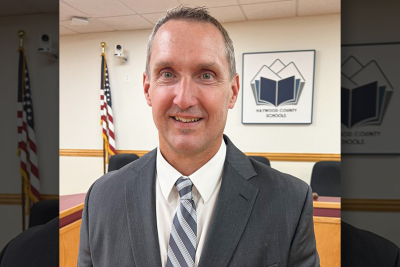Haywood County Schools has hired more people this year to care for and monitor the mental health of students. This is primarily due to increased funding from the county commission, which authorized the addition of school resource officers.
“We are proud of the number of services we have available,” Putnam said. “We always aim to improve and increase them.”
School administrators are required to provide information on the status of mental health support personnel and services annually. Putnam presented the report to the school board during its March 11 meeting.
Haywood County Schools plans to maintain the same number of psychologists and 19 school counselors from the previous year through the 2023-24 school year.
“Keeping in mind that there were budget cuts during that time, we stayed on budget as much as we could,” Putnam said.
The school system currently employs eight school nurses, five social workers, and three certified clinical social workers.
Putnam praised Brandi Stevenson, who supervises licensed clinical social workers.
“This is a therapeutic position that most school systems don't have,” Putnam said. “And Dr. Stevenson found a way to offset the cost of these licensed clinical social workers through our ability to bill Medicaid. She did a great job.”
Qualified clinical social workers provide clinical interventions appropriate to situations that impact a student's access to education.
“This is a resource that we don't normally have, and these people are key to threat assessments and risk assessments throughout the district,” Putnam said. “So I’m very grateful to have been able to take on these positions.”
The school system has 10 mental health behavioral support positions available for the 2022-2023 school year, paid for with ESSER funds. ESSER funding is federal funding given to public school systems to offset costs incurred during the coronavirus pandemic. That funding ran out this year, and the school system has been reduced to 8.5 mental health behavioral support positions this school year.
“Without the efforts of Miss Barker and Dr Crook, this number would have been much lower. “We have an assistant who has been given the funding to continue to support so many jobs,” Putnam said.
During the 2022-23 school year, Haywood County Schools will have seven school resource officers. With funding from the Haywood County Commission, that number jumped to 15 this year and he was offered eight additional positions. The position cost the county an additional $1.48 million, which required an additional 1.5 cents in the county's property tax rate.
Previously, SROs had to rotate between schools to cover the system, but now each school has one.
“We are extremely grateful to our SROs,” Putnam said.
This brings the school system to 64.5 mental health-related positions (compared to 58 positions the previous school year).
In addition to staffing, the school system also invested in the Say Something App, an anonymous reporting tool that allows students to self-report or tell someone they care about their mental health.
“We encourage students to take advantage of that,” Putnam said. “It's really anonymous.”
Haywood County Schools also employs two stepping stone teachers who work with students who are unable to participate in a traditional school setting due to behavioral issues, mental health or safety concerns.
“This is another support we provide to children who are in crisis and who may have behavioral issues,” Putnam said.
Each school in the system has a risk assessment team that identifies, assesses, and responds to threats or potential threats to school safety. That team typically consists of a principal, a school resource officer, a mental health professional, a licensed clinical social worker, and a teacher.
The school system has one behavior specialist who conducts functional behavioral assessments and develops behavioral intervention plans for students with behavioral social-emotional concerns.
“Behavior specialists also help teachers apply behavior support strategies in the classroom,” Putnam says.
The school system recently began using a program called Linewize to monitor student devices.
“This service allows us to identify students who are in crisis,” Putnam said. “Some children use their devices' email and chat features the same way they text, making them valuable monitoring devices. Through his Linewize, we are I learned about the children there.”
Linewize monitors Chromebooks assigned to students within a school system and scans them for specific trigger words and phrases.
“We are doing everything we can to understand the situation for our students, especially those who may be at risk,” Putnam said. “I would like to credit the work of principals, assistant principals, counselors and others who monitor the feedback provided by these monitoring systems.”
Feedback and alerts about the Limewize system can come in at any time of the day or night, Putnam said. He expressed his gratitude to the administration for monitoring Linewize alerts.
“These alerts come in all the time, even at night. [our administration, counselors and SROs] They need to wake up, remove themselves from their families, call the proper authorities and make sure their children are checked in the proper way,” Putnam said. “So it's hard work. It's a precious piece of work. It's very important work, but it's hard work. We're grateful to them.”


